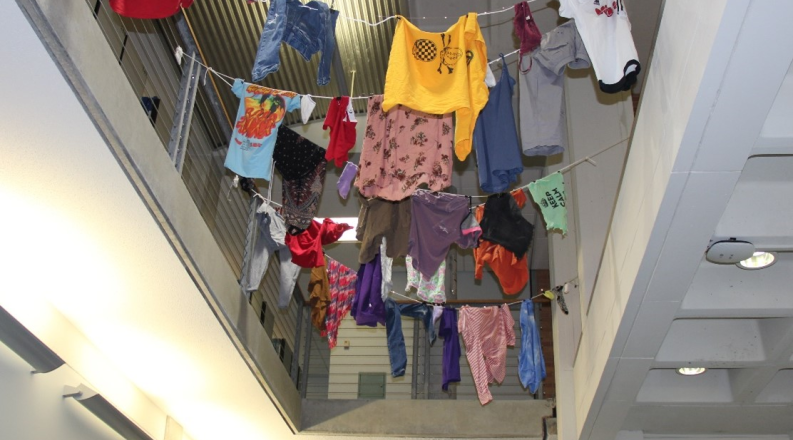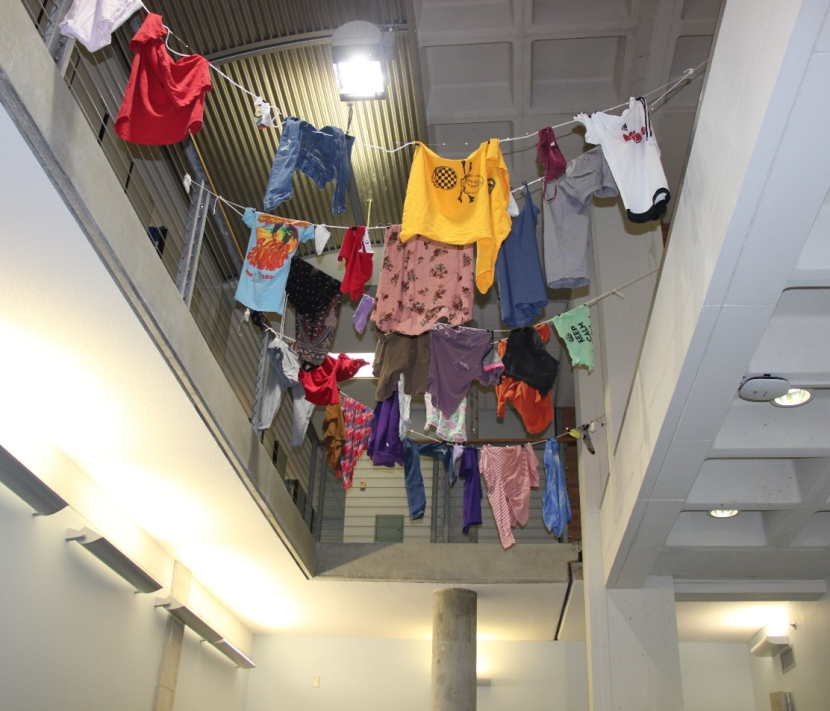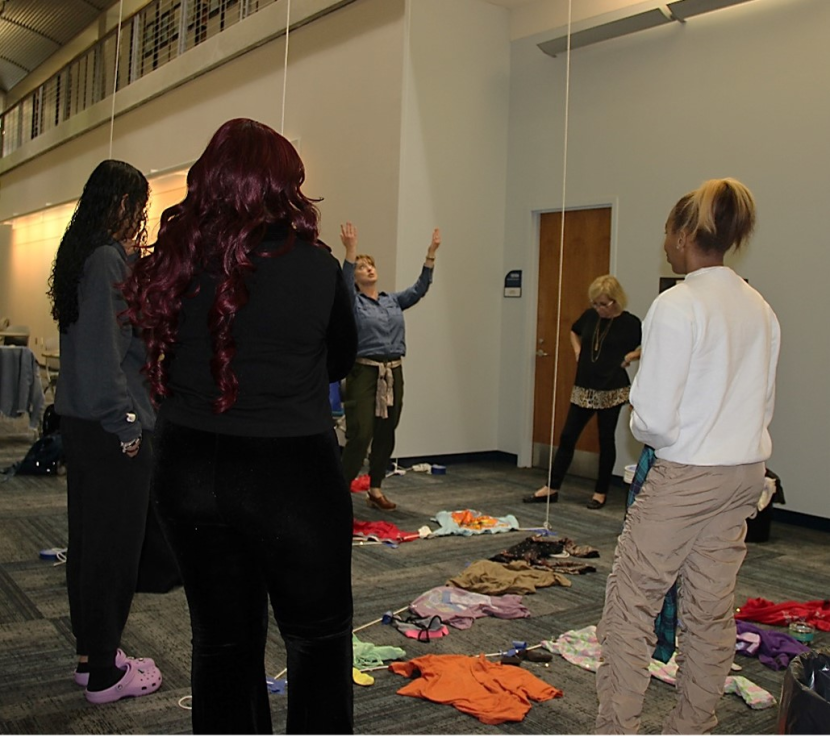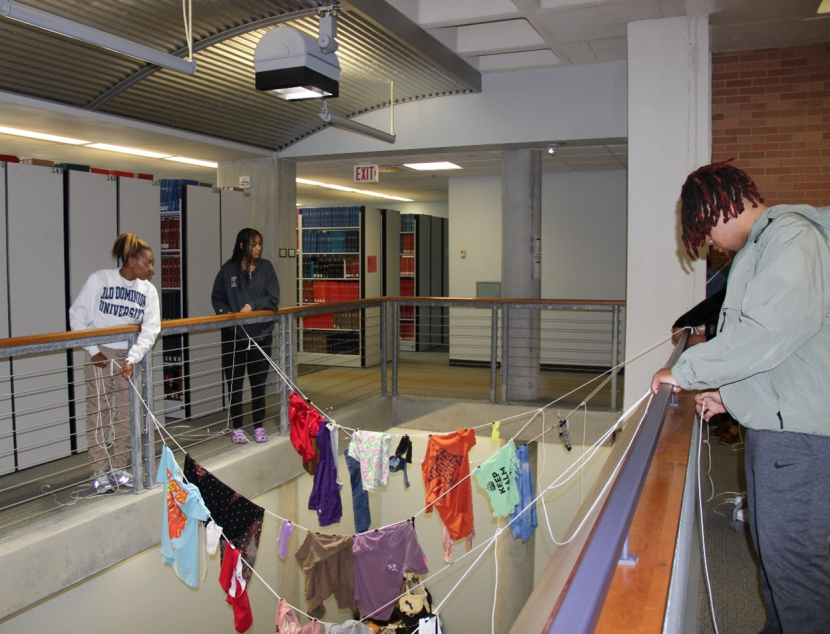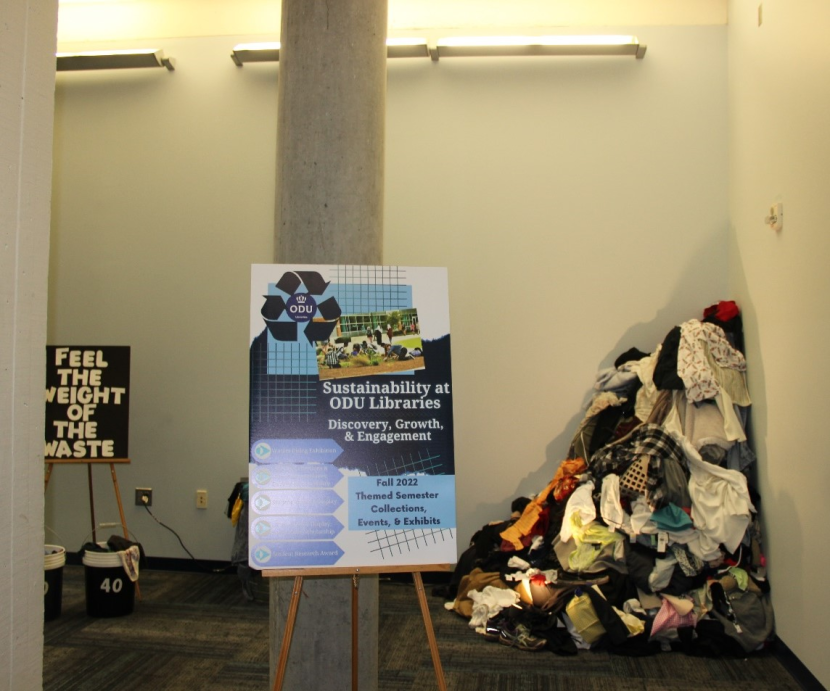Hanging clothes
Instructions being given to a group
Students hanging the clothes
Sign with clothes pile in the background
By Helena Edge
If you find yourself wandering into the Perry Library Gallery, try something: Look up. Don't worry, no one's doing their laundry. Those clothes you see hanging from the ceiling are part of an exhibition put on by fashion merchandising students in SEPS 495, Sustainability in the Fashion Industry. The class is taught by Professor Joy Kelly, who, along with her students, hopes to bring attention to the impact of consumer textile waste. They also want to inform consumers about what can be done to lessen it.
One startling statistic became the foundation for the installation: annually, approximately 80 pounds of textile waste per person ends up in US landfills. That's a lot of clothes. To nail the point home, the display includes two 40 pound buckets that onlookers are encouraged to pick up. The hope is that 80 pounds of weight will weigh heavy on the arms—and minds of consumers, and that they will be empowered to bring about social change.
As a group, the students developed a display sketch that would capture attention, educate and engage visitors, and provide information on how to keep unwanted textiles out of landfills. After fleshing out the idea and conducting research, they selected elements to prepare based on their strengths and abilities. The biggest tasks were to design signage and gather textile donations: unwanted garments, holey and unmated socks, clothing items unsuitable to donate, household textiles, and fabric bits.
Everyone involved could agree that clothing is not optional. The exhibit is meant to speak to everyone, but it is especially relevant to students, staff, and faculty who enjoy having a closet full of on-trend attire. The class wanted to use shock to capture attention and drive the point that society must change how they consume clothing and accessories.
Staged in 3 parts, including the 80 pound challenge, the display features a mound of clothing at the entrance to the gallery that is meant to resemble a pile of trash in a landfill. Finally, a poster explains how to reduce the environmental impact of consumer textile waste by purchasing less and responsibly disposing of unwanted items. A secondary poster contains QR codes to student-created pages containing links to Resell and Consignment establishments, Donation and Recycling locations, and Brand Buyback programs.
Students and faculty who are interested in being responsible consumers of clothing should visit head over to the Perry Library Gallery to see the display for themselves.To learn more about the fashion merchandising program, please contact Sharon Davis.



